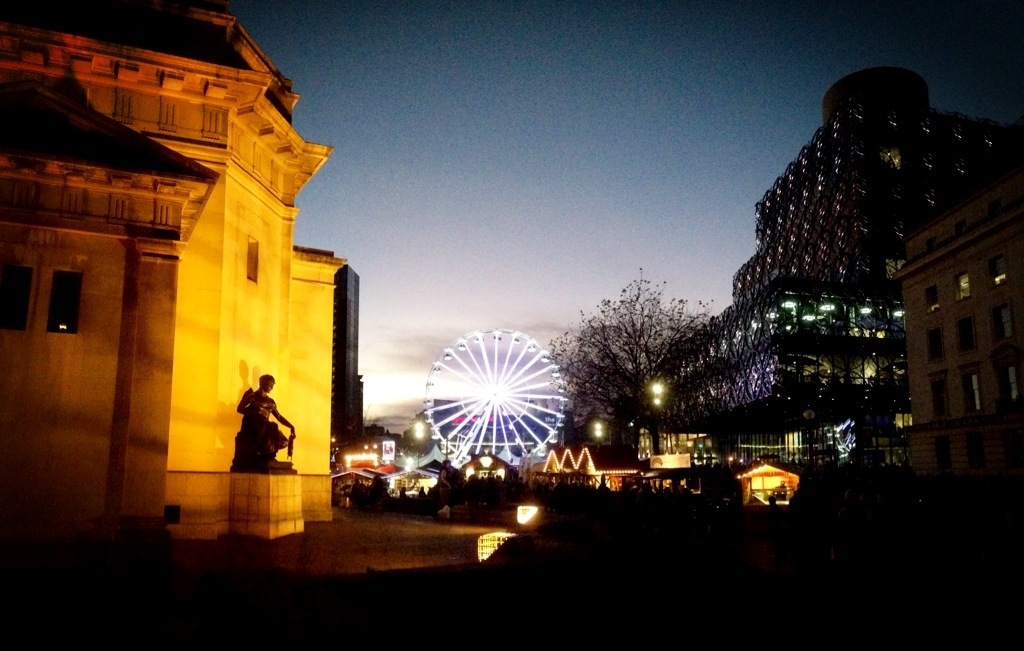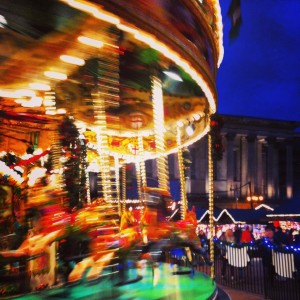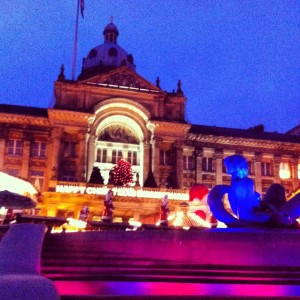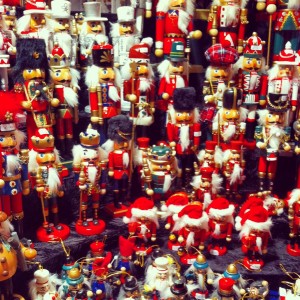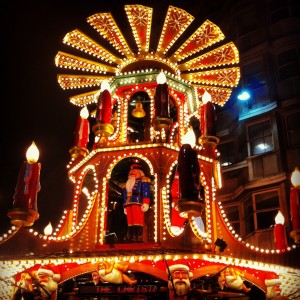Happy Christmas Birmingham! From the Horse Fair to the Frankfurt Market
Well, Birmingham’s Frankfurt Christmas Market (as featured in last week’s Friday photo) is over for another year. As it has been running for 12 years* it is almost a heritage asset in its own right now, and – love it or hate it – it seems as popular as ever.
Christmas Markets (Weihnachtsmarkt or Christkindlmarkt “auf Deutsch”) are a longstanding Advent tradition in southern Germany. The excuse for Brum’s more modern and raucous festival of Bratwurst, Gluhwein, Lebkuchen, Brezel and Bier, when the streets of our city become an ersatz German fairytale village, is Birmingham’s twinning with Frankfurt am Main. Depending on who you listen to, it may now the largest German Christmas Market in the country, or even outside the German speaking world.
In its own way, the Market actually resurrects an old mediaeval tradition of big fairs in the centre of town. Prior the 18th century the Onion Fair celebrated the first crop of onions, but gradually grew to become the pretext for a much busier collection of menageries, swing-boats, waxworks and freak shows, and a magnet for drunken behaviour. Disapproving Victorians (who seemingly have their modern equivalents!) confined the fun to the Bull Ring in 1861, and in 1875 the Onion Fair was banished from Birmingham altogether, to The Pleck in Aston (then outside the town boundaries). Annual amusements called the Onion Fair continued there, and later at the Serpentine Grounds near Aston Church under the control of impresario Pat Collins, until the construction of the Aston Expressway put paid to its home in 1968. The Christmas Market unwittingly carries the onion flame into the 21st century, in the form of a monstrous fibreglass garlic bulb sited near to the Council House…
The Horse Fair had even more historic roots, possibly dating to a 13th century royal charter granted by Henry III, and held at Michaelmas and Whit continuously from 1539 to the end of the 19th century. Unfortunately, it wasn’t to last, and according to Chris Upton’s brilliant A History of Birmingham, only 11 horses and one donkey turned up at the last one in 1911. However, the name lives on – just about – in the modern day street Horsefair at the top of Bristol Street. One of Kenneth Budd’s mosaics (some of the more colourful and humanising elements of Birmingham’s post-war redevelopment) survives in the Holloway Circus subway to depict the scene.
So, whatever your thoughts on the Christmas Market, it at least puts some of that lost excitement and bustle back on to the city’s streets. Perhaps next year if you are bemoaning the prices, the cold,the crowds, the rowdiness, the novelty hats and jumpers, and the carolling moose, you can at least console yourself that you are following in the footsteps of your mediaeval Brummie forebears.
Happy Christmas Birmingham! (und Frohe Weihnachten Frankfurt!)
*Although I have a vague recollection of it being around slightly earlier, around the time of the 1998 Winterval myth, when certain parts of the press decided that the City Council had ‘banned Christmas’ by the unlikely means of erecting a large Christmas tree, arranging a programme of Christmas events, and placing an enormous illuminated ‘Happy Christmas Birmingham’ sign across the front of the Council House.


